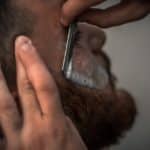How To Care For Your Feet This Summer
Do you look forward to kicking off your shoes in exchange for unwinding in flip-flops this summer? Nothing feels better than freeing your feet from the constraints of shoes. However, before you bury your feet in the sand or tickle your toes barefoot in the grass, it is important to know the potential dangers that can happen to your feet. From the dangers of walking around barefoot to what causes splinters, rashes and fungus growth, put your feet up and enjoy your summer by taking precaution.
Blister-Proof
If you tend to walk around barefoot on gravel or a wooden deck or wear irritating sandals just because they’re fashionable, you could succumb to blisters. Blisters arise from friction-like chafing between your foot rubbing against shoes or rough surfaces. The skin forms a fluid-filled pouch to protect the sensitive skin underneath. Blisters are annoying and painful. In some cases, blisters can result in permanent damage to your skin or an infection if not treated properly. Blisters can be easily cared for; simply clean the area with gentle soap and water, and then applying an antibiotic ointment and bandage.
Protect Against Cracked Heels
Open-backed sandals and Espadrilles put you at risk for heel skin cracking. The fat pads on the bottom of your heels over time can thin out, thus, creating a thin layer that can easily tear. Keep in mind; dry skin from the summer heat on your heel can also cause cracking. To treat deep cracks clean the affected area with soap and water, then cover with antibiotic oil and a band-aid. To avoid cracked heels use an exfoliate moisturizer daily. You can also use a pumice stone once or twice a week when showering. Remember to use the pumice stone in one direction, as rubbing back and forth will cause more splitting.
Wear Supportive Shoes
Footwear plays a big role in foot care. Wearing flip-flops can cause stress fractures, tendonitis, and heel pain. Thin flip-flops often lack the heel support needed for weight support and movement and may even cause lower back pain. Instead, be proactive when walking around this summer and wear flip flops that have a thick sole and arch support. Not sure if your flip-flops offer the support you need? Try bending your flip flop in half. If then do bend, replace with a pair that has more heel support. Furthermore, wearing strappy sandals can help reduce the stress placed on your toes when walking.
Beware of Going Barefoot
Dermatologists and podiatrists advise to not walk around barefoot as doing so increase the risk of contracting viruses such as warts, fungus, or other skin infecting bacteria. Germs grow in warm, moist places and during the summer your home or vacation swimming pools, beaches, and lake houses are bacteria breeding grounds. To decrease risk for infection, dry your feet thoroughly after water activity or showering as germs and fungus can grow in the small nooks and crannies between your toes.
Hot temperatures lead to sweaty feet, thereby increasing the risk of skin infections and fungus growth such as Athlete’s foot. To avoid this, try wearing lightweight, wick socks that omit moisture from the feet and toes. For a natural home remedy, brew black tea and soak feet for thirty minutes. On the other hand, be sure to avoid suffocating your feet from the summer heat. To keep your feet hydrated and clean, rub your feet in emollient-enriched cream.
Often at the beach or pool, feet easily become sunburn as many people lose sight of applying sunscreen to their feet. Not applying sun block coupled with overexposure to harmful UV rays can lead to melanoma. To reduce your risk of sunburn, apply sunscreen to your feet at least 15 minutes prior to sun exposure. If your feet get sunburnt, apply Aloe Vera or Silvadene cream to relieve pain and reduce the risk of sun poisoning.
The Danger of Open Shoes
As inviting as the summer weather may be for open toe shoes, wearing open shoes cause bacteria growth. In fact, a pair of flip-flops can harbor up to 18,000 cells of bacteria. These types of bacteria include Staphylococcus aureus, also known as MRSA, ringworm, or Athlete’s Foot. Walking in open shoes welcomes debris in the forms of bacteria from the streets to the sand at the beach, and can spread into your home. It’s best to remove your shoes before entering your home to keep the germs outside. If your house has wall-to-wall carpeting, consider rearranging your furniture to avoid germs harboring in the crevices between the wall and carpets. Wash your hands often and thoroughly to avoid spreading germs and coming into contact with the bacteria your feet can meet when wearing open shoes.
Pedicure Precautions
The nail salon may feel like a relaxing place to plant your feet, but it also houses a plethora of germs. Soaking your feet in whirlpools that are not properly disinfected can cause fungus, warts, and serious infections such as MRSA. As a precaution, carry a personal nail care set, especially a nail file for your feet. To thoroughly kill any bacteria clean pedicure tools with a Betadine solution.
As an additional precaution, Podiatrists recommend not shaving or waxing your legs 24 hours before your nail appointment. This is to ensure microscopic cuts you may endure from shaving or waxing will not be exposed or open to any infection.
Steps To Healthy Feet This Summer
Enjoy this summer by keeping your pretty little toes out of harm’s way with these precautionary measures from the experts. For questions or concerns regarding your foot care contact the dermatologists at Short Hills Dermatology today.





